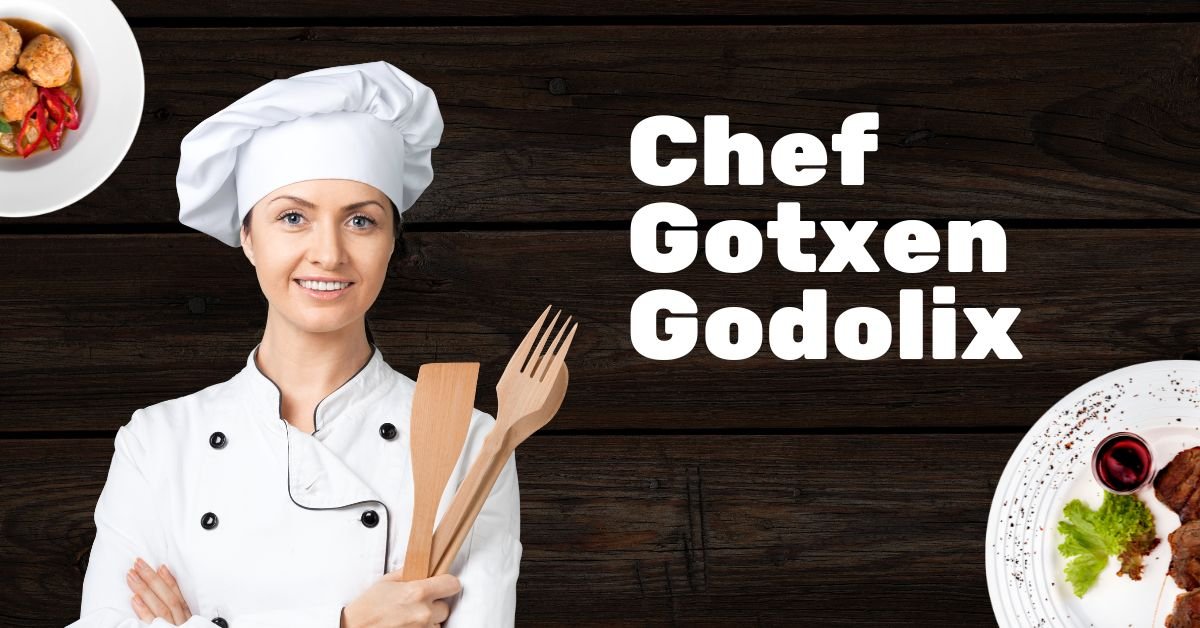In the ever-evolving world of gastronomy, few names have sparked as much curiosity and buzz in 2025 as Chef Gotxen Godolix. Known for his unexpected fusion techniques and deeply philosophical approach to food, Chef Godolix isn’t just a chef—he’s a storyteller, an artist, and a cultural provocateur working with flavor as his medium. Whether in exclusive kitchens or public pop-ups, his presence is felt and his dishes talked about far beyond the plate.
But who is Chef Gotxen Godolix? Where did he come from, and what exactly makes his culinary identity so compelling in today’s saturated food scene? This article explores the chef’s origins, creative philosophy, signature dishes, and the growing movement his name represents in global cuisine.
Chef Gotxen Godolix doesn’t rely on trends. Instead, he reinvents expectations, turning forgotten ingredients and historical techniques into unforgettable modern experiences.
The Origins of a Culinary Maverick
Chef Gotxen Godolix’s journey begins in a modest kitchen in northern Spain, where early exposure to Basque coastal cuisine influenced his deep respect for seafood, fermentation, and slow processes. However, his formal training didn’t happen in traditional European kitchens. Instead, he traveled extensively through Southeast Asia, Central Africa, and South America, absorbing local techniques and philosophies before creating his own.
This multicultural exploration shaped his now-signature style—a layered, textural cuisine that often draws from contrasts: sea versus soil, heat against rawness, and rustic simplicity beside molecular elegance.
His early experiments with dried shellfish powders, smoked roots, and edible clay drew sharp criticism in the beginning. But over time, the culinary world began to recognize the depth behind his dishes. What once looked like strange choices are now hailed as bold steps toward a new gastronomic vocabulary.
What Makes Chef Gotxen Godolix Unique?
It’s not just the ingredients he uses, but the way he builds a narrative around every plate. Godolix is known for using food to challenge ideas of comfort, memory, and tradition. A simple broth from him might be infused with salt from a centuries-old salt flat or seasoned with ash from burned citrus peel—ingredients that seem odd but carry deep symbolic and sensory meaning.
His dishes often explore themes like:
-
Impermanence and decay (fermented sauces that change flavor as they sit)
-
Migration and belonging (combining spices from displaced communities)
-
Nature’s forgotten forms (edible flowers, mosses, bark infusions)
More than just meals, his plates provoke conversation. Diners are not just fed—they’re engaged, sometimes even unsettled, in the best way possible.
The Rise of the “Godolix School”
As his influence has grown, a new generation of chefs have started referring to themselves as part of the “Godolix School.” This isn’t an official institution but rather a creative movement that embraces his mindset:
-
Local-first ingredient sourcing even in urban kitchens
-
Zero-waste cooking, where every part of an ingredient finds purpose
-
Cultural storytelling, where food reflects migration, memory, and time
While some dismiss it as overly conceptual, many young chefs are finding it to be a liberating approach that moves away from perfection and toward purpose.
Signature Dishes That Sparked the Buzz
Several of Chef Gotxen Godolix’s creations have become legendary in elite food circles. Each one tells a story—not just with ingredients, but through textures, temperature, and even plating style.
“Milk of Ashes” is perhaps his most talked-about starter. Served in a handmade black ceramic bowl, it’s a broth made from charred leeks, smoked kelp, and goat’s milk, finished with a drop of fermented chili oil.
“Clay Memory” is a course where root vegetables are slow-baked in edible clay, cracked open tableside to reveal herbs and pickled petals infused inside.
“Lost Shore” is a seafood dish that includes razor clams, pickled sea grape, and freeze-dried seaweed foam, referencing forgotten coastal recipes from pre-industrial times.
These dishes aren’t meant to be repeated easily—they’re specific to their setting, time of year, and even the mood of the meal. That unpredictability keeps audiences returning and critics intrigued.
Influence Beyond the Kitchen
Chef Gotxen Godolix is not confined to white linen restaurants. He’s collaborated with climate scientists on food sustainability projects, hosted public art-meal installations, and worked with indigenous communities to preserve endangered food traditions.
He’s also vocal about the future of food—from AI-driven meal design to the ethics of lab-grown ingredients. But while he appreciates innovation, his core belief is that food must remain grounded in human emotion, history, and respect for nature.
Through lectures, workshops, and collaborations with food educators, Godolix is shaping more than palates—he’s influencing how people think about consumption itself.
Reception in the Culinary World
At first, critics were divided. Some saw his work as “too artistic,” “impractical,” or “alienating.” But as food publications and fine dining authorities began highlighting his consistency and authenticity, the tone shifted.
In 2024, he was awarded the “Experimental Visionary of the Year” by a leading gastronomy think tank. By 2025, several of his protégés had opened successful concept restaurants across Europe and Latin America, all tracing their inspiration back to his daring creativity.
Today, he is featured in both high-end food documentaries and underground chef forums—rare visibility that reflects his wide reach.
Conclusion
Chef Gotxen Godolix is not just another rising culinary name—he represents a deeper shift in how we think about food. In a world where trends come and go, and Instagram plates dominate the dining scene, Godolix’s work is a bold reminder that cuisine can still carry depth, story, and soul. His style may not appeal to everyone. But for those who seek meaning in their meals, who believe that food can reflect time, place, and identity, his name is impossible to ignore. In 2025 and beyond, expect to see more chefs draw from his methods, more conversations about food as memory, and more diners looking not just to eat—but to understand.
